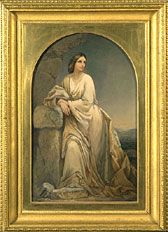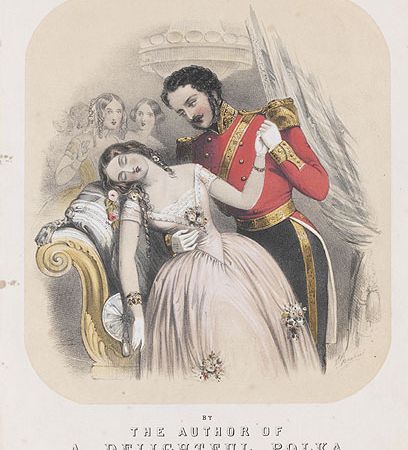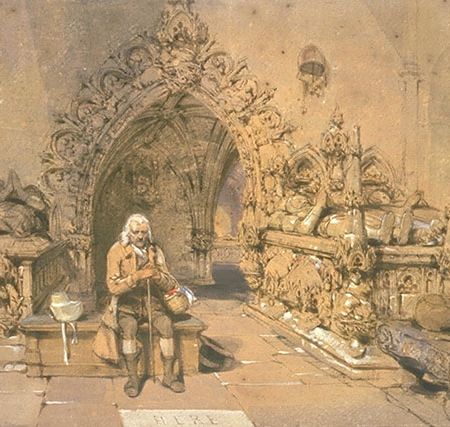 | The Victorian Age brought a lot of changes to culture and especially arts, mainly by putting the accent on the presence and expression of sentiments and feelings, regardless of the medium, being a watercolour, a hastly sketch or the cover for a music sheet. This scenes of tenderness and family love were very popular at that time in England, very sought after by collectors, as they were perfect for display in homes and family rooms. In short time, this genre became marked by commercialism, and despite the actual quality of many artworks, younger audiences and artists began to disregard it. |
The Victoria & Albert Museum in London has been presenting since December 7 2006 an exhibition dedicated to this phase of Victorian art, "Sentiment in Victorian Prints & Drawings", reuniting some of the best works of the genre. But the curators have succedeed also in showcasing the artworks on a theme criteria, presenting to modern audiences the best and most used themes. The objects selected are so divided into several sections, each dedicated to one of these themes.
Love
 | Without a shadow of a doubt the most popular and appreciated, it played a key-role in the world of sentimental imagery, ranging from scenes of rejection and disappointed love to happy scenes of blissful married happiness. Ranging from traditional art works to valentine cards and music sheet covers, this subject gave birth to an impressive range of symbols and signs, such as the heart pierced by an arrow, the flowers, the Cupid and many others, still used today. The letter, the language of flowers between lovers, the certain intrigue and mystery that surrounded love stories in the imagination of many women produced a great number of creations, of varied quality, but all the same very popular. Even if most of the masters of the genre were forgotten soon after, then they were regarded as brilliant artists. |
Nature, the Seasons & the Passing of Time
Another great Romantic theme in 19 century England was nature, regardless if it was captured in peaceful scenes, at various times of the year or the work marked the passing of time. The compositions were highly idealised, as an escape from the modern industrialisation, and many of the artists used this theme to create interpretations, profoundly personal ones, of past event in history. And despite the fact that the historical truth was seldom ignored, the works were popular. The reinvention of the past, the search for the happy moments that were just memories, all in the frame provided by nature, was successful. |  |
Childhood
This was not a very popular subject among art critics and artists, but as the public preffered compositions which included children, it was a short time till several painters and draftsmen were atracted to the subject. And, ignoring the opinion of the critics, they took up on the subject and images of children soon became a common place in magazines, illustrations and art. These kind of works, in which children were depicted often highly idealised and many times as angels or pagan deities - or at least they had their beauty, grace and innocence - proved to be a smash on the marked. The 19th century view of the childhood period was that of a pure, separate part of life, and the viewers - and eventual buyers - were touched by nostalgia and affection for the little heroes. The sales increased rapidly, yet some claimed that these type of works were utterly commercial and unrealistic. |  |
Death
Although one might think that the Victorian culture was marked by love and caring, death played an important role and was highly visible in popular culture and arts, as an ultimate symbol of Romantic expression. The loved ones that passed away and Death itself were important and popular subject, and a whole industry appeared, including not only artworks but also mourning dresses and attires, songs, texts, poems, albums, all sentimentalising the reality of death.

A key part of this generous and popular subject were scenes captured on the deathbed, mainly moral stories, depicting the end of saintly and moral lifes, when the deceased ascended straght to Heaven, in all his glory. Also, untimely deaths, especially those who separated lovers or families were truly a gold mine.
Sentimental Response
Sentimentality seemed to be the most important part of Victorian art and society, and the works in this section, ranging from books to images and objects, provide an inteligent ending to the voyage in the past.
Photos : vam.ac.uk
2007-08-16

































